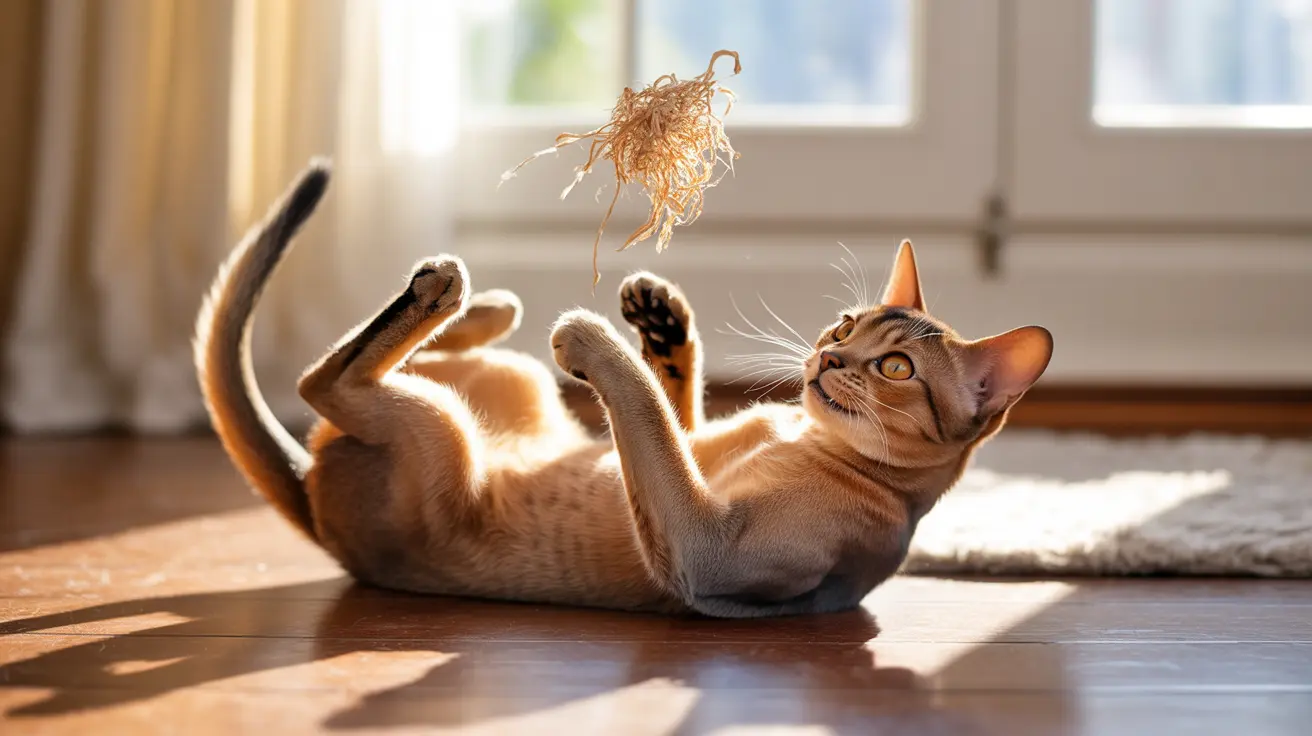For cat owners wondering about catnip portions, understanding safe amounts is crucial for your feline friend's wellbeing. While catnip is generally safe and non-addictive, knowing the right amount to give your cat can help avoid potential digestive issues while maximizing the herb's enrichment benefits.
In this comprehensive guide, we'll explore proper catnip dosing, timing, and safety considerations to ensure your cat enjoys this natural treat responsibly.
Understanding Catnip's Effects on Cats
Catnip (Nepeta cataria) contains nepetalactone, a compound that triggers a temporary euphoric response in sensitive cats. When cats smell this compound, it binds to receptors in their nasal tissue, stimulating sensory neurons that create the characteristic "catnip response."
Interestingly, only about 50-75% of cats react to catnip due to genetic factors. The effects typically last 10-15 minutes, after which cats become temporarily immune to its effects for about an hour.
Safe Catnip Portions and Frequency
The ideal amount of catnip varies by cat, but starting with a small pinch (about 1/4 teaspoon) of dried catnip is recommended. For fresh catnip, use a few leaves. This modest amount is enough to gauge your cat's sensitivity while avoiding potential overconsumption.
As for frequency, offering catnip once or twice a week is generally safe. Daily use isn't recommended as it can lead to decreased sensitivity over time.
Signs of Catnip Overconsumption
While it's nearly impossible for cats to experience a dangerous overdose from catnip, too much can cause uncomfortable symptoms including:
- Vomiting or diarrhea
- Excessive drooling
- Unusual aggression
- Disorientation
- Excessive vocalization
Best Practices for Catnip Use
To ensure safe catnip experiences:
- Start with small amounts
- Monitor your cat's reaction
- Provide fresh water nearby
- Store catnip in airtight containers
- Supervise catnip playtime
- Choose high-quality, organic products
Special Considerations for Different Cats
Age and health status affect catnip sensitivity. Kittens under six months typically don't respond to catnip, and senior cats may show reduced interest. Pregnant or ill cats should avoid catnip until cleared by a veterinarian.
Frequently Asked Questions
How much catnip is safe to give my cat without causing digestive upset?
Start with 1/4 teaspoon of dried catnip or a few fresh leaves. Monitor your cat's reaction and adjust the amount based on their individual tolerance. Most cats will naturally limit their intake.
How often can I give my cat catnip without reducing its effectiveness?
Limit catnip sessions to once or twice a week to maintain effectiveness. Daily use can lead to decreased sensitivity and potential tolerance build-up.
What are the signs my cat has had too much catnip or is overdosing?
Signs of overconsumption include vomiting, diarrhea, excessive drooling, unusual aggression, disorientation, and excessive vocalization. If these symptoms occur, reduce the amount given or discontinue use.
Can kittens or older cats safely use catnip, and how does their reaction differ?
Kittens under six months typically don't react to catnip. Older cats may show reduced sensitivity or no interest. When introducing catnip to any age group, start with small amounts and monitor their response.
How can I introduce catnip to my cat for the first time and monitor their response?
Offer a small pinch of dried catnip or a catnip toy in a calm environment. Watch for typical responses like rolling, rubbing, or increased playfulness. If your cat shows no interest or adverse reactions, they may be part of the genetic group that doesn't respond to catnip.
Conclusion
While catnip is generally safe for cats, moderation is key. Start with small amounts, observe your cat's reaction, and adjust accordingly. By following these guidelines, you can ensure your cat safely enjoys the recreational benefits of this natural herb while avoiding potential digestive issues or overstimulation.






